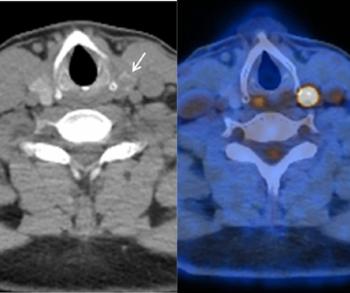While corticosteroid injections reportedly facilitate short-term pain relief for those with knee osteoarthritis (OA), emerging magnetic resonance imaging (MRI) research suggests that hyaluronic acid injections may provide more sustained long-term protection against OA progression.
For the multicenter prospective study, recently published in Radiology, researchers reviewed 3T MRI data obtained two years prior to knee injection, at the time of knee injection and two years post-injection to compare the impact of corticosteroid injections versus hyaluronic acid (HA) injections in 210 study participants (mean age of 64). The cohort had a mean body mass index (BMI) of 29.5, a mean Western Ontario and McMaster Universities Osteoarthritis Index (WOMAC) of 3.3 and mean Kellgren-Lawrence (KL) grade of 1.7 for pain, according to the study.
The study authors found that corticosteroid injections were associated with a higher progression of the Whole-Organ MRI Score (WORMS) at two years than control patients in comparison to control participants (mean difference of 0.39) and those who had HA injections (0.42).
In comparing the concurrent injection MRIs with post-injection MRIs, researchers noted no statistical difference in WORMS progression between controls and those who had corticosteroid injections (mean difference of 0.01 vs. 0.03). However, they pointed out a mean reduction of WORMS progression in participants who had HA injections (a mean difference of – 0.42). In the assessment of cartilage degradation, the study authors found that corticosteroid injections were associated with increased cartilage degradation (a mean difference of 0.28) in contrast to controls (0.06) and the reduced cartilage degradation in participants who had HA injections (- 0.78).
“Intra-articular corticosteroid injections were specifically linked to an increased progression of structural knee OA, as assessed using the WORMS system. This progression was notable not only in the overall WORMS but also specifically in cartilage degradation, suggesting that corticosteroids may accelerate cartilage loss, which is a key indicator of OA advancement,” wrote lead study author Upasana U. Bharadwaj, M.D., who is affiliated with the Department of Radiology and Biomedical Imaging at UCSF Medical Center in San Francisco, and colleagues.
Three Key Takeaways
1. Corticosteroid injections may accelerate OA progression.
Intra-articular corticosteroid injections were linked to increased structural progression of knee osteoarthritis (OA), especially in terms of cartilage degradation, as measured by MRI-based WORMS scores.
2. Hyaluronic acid (HA) injections may offer structural protection. Patients who received HA injections showed reduced progression in WORMS scores and cartilage degradation, suggesting a potential protective or stabilizing effect on knee joint structure.
3. MRI evidence supports preferential use of HA for long-term management. While corticosteroids may offer short-term pain relief, MRI findings indicate that HA injections may be more beneficial for long-term joint preservation in knee OA patients.
Based on the post-injection MRI findings at two years, the study authors suggested that HA injections may have a stabilizing impact on the structural integrity of the knee.
“The progression of OA-related changes, particularly in cartilage, was lower during the post-injection period than during the injection-concurrent period. This suggests that HA may have a moderating effect on structural damage, potentially stabilizing cartilage health after the initial injection phase,” posited Bharadwaj and colleagues.
(Editor’s note: For related content, “New Interventional Radiology Research Shows Merits of Genicular Artery Embolization for Knee OA,” “Could AI-Powered Abbreviated MRI Reinvent Detection for Structural Abnormalities of the Knee?” and “Study Examines Impact of Deep Learning on Fast MRI Protocols for Knee Pain.”)
In regard to study limitations, the researchers noted the observational study design and that a variety of factors, ranging from type of injection to changes in knee structure and pain, can influence the use of intra-articular knee injections. Emphasizing that study participants were only asked about knee injections they had in the preceding six months, the study authors conceded a lack of clarity on whether participants had only one knee injection or whether there were any injections in control knees.




























